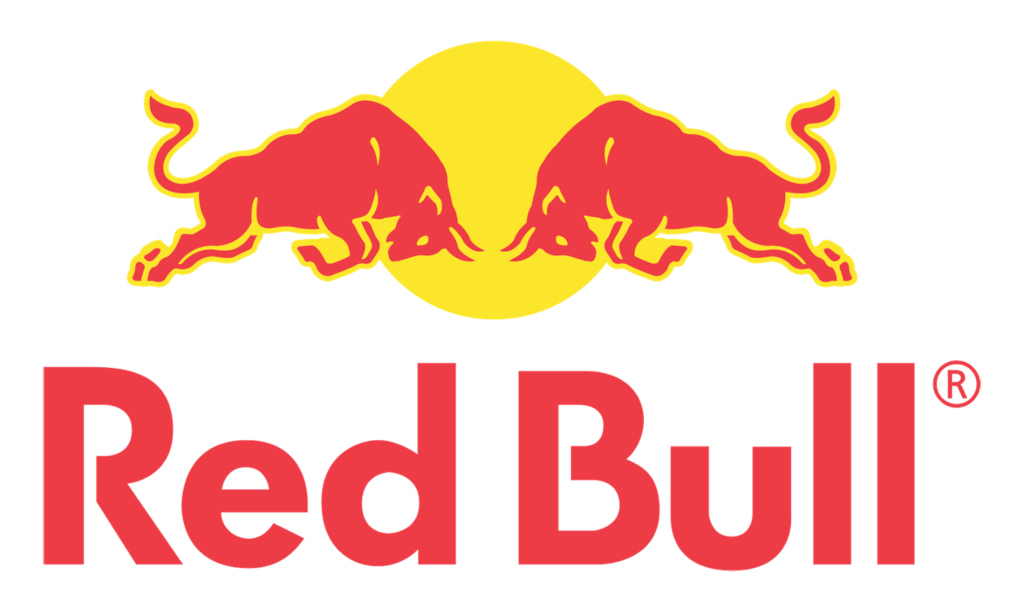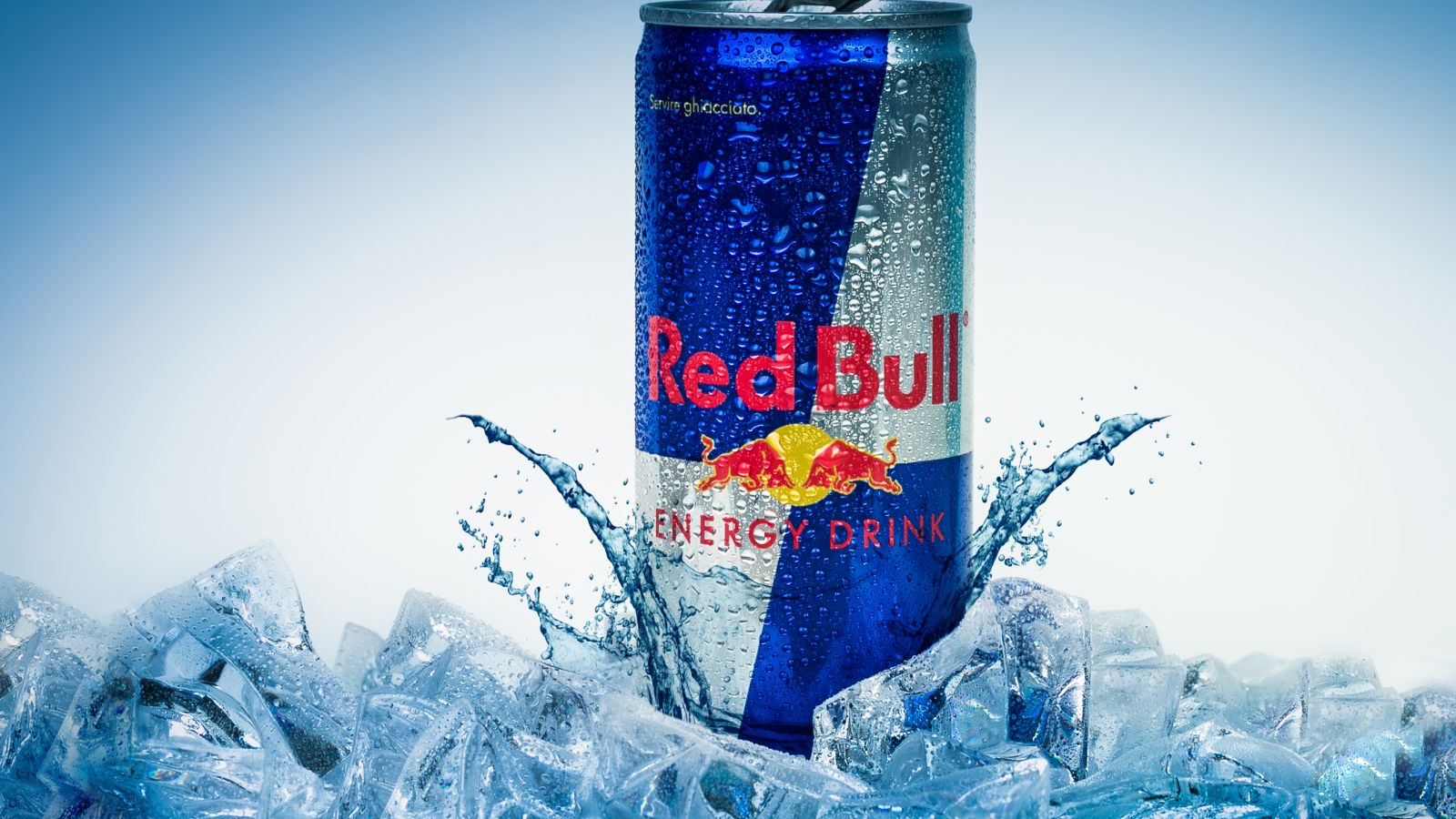Red Bull sold 7.5 billion cans of the energy drink, i.e., they sold a Red Bull can to almost every person on the planet in 2019, making revenue of 6 billion USD. Red Bull owns five professional football clubs, runs two formula- one team, one ice hockey team, and is famous for its extreme sporting events and athletes. Not mentioning the events like crashed ice challenge or the Wings for the life run. Red Bull also sponsors thousands of athletes and also runs a media production. Obviously, Red Bull does much more than selling an energy drink.

History
In the summer of 1982, the Austrian businessman Dietrich Mateschitz found himself suffering from a jet lag during a business trip to Thailand. He tried a local drink called Krating Daeng, which improved his jet lag substantially. Krating Daeng can be translated to Red Gaur, a Gaur being a huge bison from Southeast Asia which basically means Red Bull. Inspired by the product’s magical qualities, Dietrich Materschitz decided to bring the product home in the format of a brand new product category – The energy drink.
He pitched his idea several times to Western investors but got turned down because the investors didn’t see a market for the product outside Asia. Mateschitz was well aware that there was no market at the time.
So what did he do? He decided to create one. He initially invested 50$ million himself then teamed up with Krating Daeng manufacturer, who also invested 50$ million for the ownership of another half of the company.
Next, he adapted the formula and flavor for the European market and successfully launched Austria’s product in 1987. The drink was initially banned in Germany; it profited from a reputation as an outlaw brand. Many young Germans would cross the border to Austria to buy the banned energy drink, and Red Bull sold over a million cans in their first year.
From Austria, it quickly spread across Europe, first to Slovakia and Hungary in 1992 and then to Germany and UK in ’94. When it entered the US market three years later, Red Bull was selling over a million cans every day.
Operations
Soft drink giants like Coke and Pepsi could benefit from deeper pockets, but they underestimated the strategic intent of Mateschitz and the upcoming brand. New sorts of the corporation focused only on the value chain’s downstream activities while outsourcing operations such as production and logistics.
It means Red Bull itself is actually not producing the drink – production and filling of the cans are completely outsourced, so the company can fully commit its resources to sell the drink. Looking at the profit margin that pays off, one of Red Bull’s secrets of success is that they can charge a much higher price than their competitors.
Production Cost of each can: $0.09 USD
Retail Price: $3.59 USD
Wholesale Price: $1.87 USD
That is 20 times greater than the production cost of the wholesale prices.
Branding Strategies
Red Bull gives you wiiings. But how do you know that in this world of global marketing promising the world, these wiiings are not the mythical ones? The company’s marketing and branding strategy are elusive, eclectic, and diverse, utilizing the combination of online and offline channels to target customers and expand its brand breadth.
Positioning: Red Bull’s brand strategy is an example of a positioning in which product features are translated into functional and emotional benefits. It centers around the idea of “vitalizing body and mind” thanks to caffeine and taurine content, as reflected in the famous brand slogan: “Red Bull gives you wiiings”. Throughout its history, the Red Bull brand has educated consumers that the energy boost it promises to deliver, can be used on a range of occasions: it can help improve physical and mental performance, fight fatigue, or increase concentration, thus making it a drink for a wide audience, rather than a narrow niche.
Sponsorship: Red Bull is also famous for its involvement in extreme sports. The number of initiatives, of which the brand is an organizer or a sponsor, is astounding: from events for professionals such as Red Bull Air Race, Red Bull Rampage (mountain bike competition) or Red Bull Snowscrapers (snowboard jumps), to the tournaments for amateurs, e.g., Red Soapbox Race (a race, in which drivers use homemade, non-motorized vehicles) or Red Bull Flugtag (a flying contest, in which people use homemade “aircraft”). In addition, Red Bull is engaged in music and gaming, has its own radio, magazine (The Red Bulletin), and connected TV channel, and sponsors multiple extreme sports athletes.
The ultimate example of Red Bulls’ story performing strategy is Felix Baumgartner jumping from space in 2012. It is believed that the project cost them about 50M USD, but some experts estimated it to be around 6 billion USD. Sponsoring extreme sports events and selling products with an edge enables Red Bull to be a market leader in its category.
Red Bull spend almost a third of their revenue on marketing to reach a position where they are today. Despite all this, the revenue growth of Red Bull slowed down since the company is depending almost entirely on one product, i.e., the energy drink. This is a risk and for limiting its growth. With the growing awareness of health and nutrition, the focus on a product that causes obesity, insomnia, and diabetes might eventually backfire.
Media House: Even though selling an FMCG product, the Red Bull brand has transformed itself into a media company. It’s one of the first brands that began to produce video content without any intention of broadcasting it on TV; rather, most of it is hosted on the brand’s own media platforms and YouTube channel. Red Bull Media House is a Red Bull subsidiary responsible for producing content, operating Red Bull’s media platforms, and establishing partnerships with other businesses, which either want to use the brand’s content or advertise on its media platforms.
Traditional Media: Although Red Bull is primarily associated with extreme sports, the brand also uses TV to build a more approachable image among mainstream audiences. Red Bull TV adverts have been based on the same creative format since the 1980s, which takes the form of humorous cartoons dramatizing the idea of “giving wings” (e.g., “Traffic Jam” or “Chess”).
Also Read: Creating A New Market Through Attractive Packaging – PaperBoat
Current Market
Investments in sports teams and media production are, therefore, marketing activities and the attempt to diversify and create additional value chains next to the can business. Red bull takes advantage of a fully integrated entertainment and media value chain to implement sport as a business, ranging from media production to team ownerships, broadcasting arrangements, and contract management. Red Bulls’ football team is one example of their strategy. Owning more than one club allows them to use synergies, for example, when developing talent.
Fun Fact: Red Bull GmbH, the brand’s owner, does not produce the energy drink; its Thai partner does. The main function of its Austrian headquarters is building up the brand image. Also, Red Bull has set up a research foundation known as Wings for Life, whose main aim is to find ways to cure spinal cord injuries.
To read more content like this, subscribe to our newsletter.


